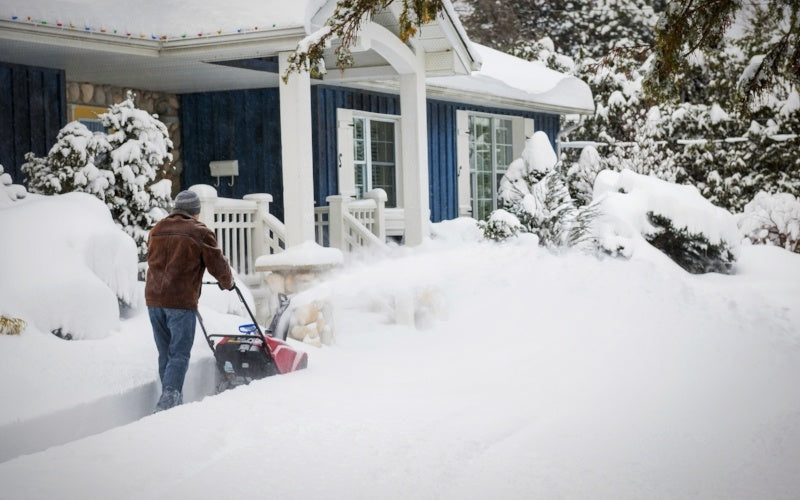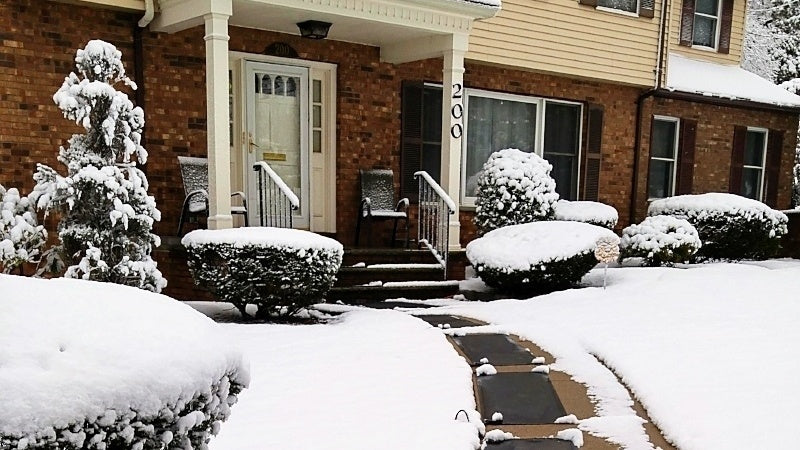Rock salt sales skyrocket each year as winter rolls around, and if it turns out to be a particularly snowy/icy season, rock salt sells so fast that stocks run low, prices soar, and rationing policies are sometimes instituted. However, the truth is that rock salt is one of the most damaging deicing options available, both to home pavements and nearby grass and plant life.

You cannot control how the roads are deiced, but you can control how deicing is done on your own premises. First, we will look at the problems caused by rocks salt, then at some other deicers, and finally, at non-chemical solutions to ice and snow removal.
The Truth About Sodium Chloride (Rock Salt)
First of all, we should acknowledge some of the good qualities of rock salt that have made it the most popular deicer in use today. It is relatively cheap, easy to find, simple to apply, and does a good job melting ice and snow.
However, it only works down to a temperature of about 19° F (-7.22° C), "browns" vegetation by contaminating the soil, corrodes the undercarriages of cars, contaminates local water supplies used by fish/wildlife, helps to corrode metals it contacts, and (last but not least) accelerates the deterioration of pavements.
What About Alternative Deicing Products?
Depending on where you shop, there will be a number of other deicing products available to melt the snow/ice off of your driveway, walkways, and entryways. These products cost more than rock salt but are superior in certain respects. Many of them, however, also share some of rock salts problems, including pavement damage and environmental contamination.
-
Potassium chloride (potash), though normally a fertilizer, is sometimes used as a deicer. It only works down to 25° F (-3.89° C), however, and can actually damage plants when used in high enough concentrations to be effective as a deicer.
-
Calcium chloride is effective in smaller amounts than required for rock salt and works down to -9.5° F (-23° C). It is a somewhat "greener" option due to its lighter use but still has the same detrimental effects.
- Urea, also normally used as a fertilizer, does less damage to plant life and does not cause metal corrosion, but it does cause algae bloom in local water supplies. It works down to only 23° F (-5° C) and costs five times more than rock salt.
-
Potassium acetate also does not cause metal corrosion, and it is partly biodegradable. It works down to -15° F (-26.11° C) and is often billed as the "greenest" deicer of all. However, it can cost ten times as much as rock salt or even more.
You can also mix rock salt or another deicer with sand to reduce its negative impacts. This will reduce its effectiveness, but if you get the mix just right, it can often be "sufficiently effective," while the sand provides extra traction. And finally, salt brine mixtures can be applied before a big snowfall to make for easy, quick snow removal and prevent black ice from former. This still puts salt on your pavements, but at least, not in as high concentrations.
How Can I Deice "Without Deicers?"
While chemical, salt-containing, applicants are traditionally called "deicers," there are other ways to deice your pavements during the winter season.
Top non-chemical snow/ice removal methods include:
-
Mechanical removal: A good snow shovel, an ice pick, and a snow blower will "get the job done" as long as the ice is not too tightly attached to the pavement. This method is simple and fairly cheap, but it is also intense and physically demanding. Long exposure to low temperatures can lead to hypothermia, and slip and fall accidents are a major danger.
-
Professional plowing: Hiring a snowplow service to clear off your driveway is an easy solution if you don't feel 100% safe doing it personally or if you simply don't have the time. But a typical driveway costs around $40 (approximately $53.76 CAD) to plow, and $75 (approximately $100.80 CAD) per hour is a normal rate. Depending on your driveway size, the local market, and how snowy the winter is, you could be paying hundreds of dollars each year.
-
Heated pavements: It is possible to install a snow-melt system under your driveway and/or walkway that will keep all/part of it free of snow/ice. However, whether electric-coil or hydronic systems are used, it will normally cost thousands of dollars to install since a new driveway typically has to be poured.
-
Heated snow-melting mats: Snow-melting mats do the job of a heated sidewalk, while costing much less, and driveway mats are the perfect solution for a heated driveway. This option allows seasonal usage only and the ability to take your mats with you if/when you move.
While rock salt and other chemical deicers may have a place in deicing your home, non-chemical methods like heated driveways and snow-melt mats avoid damaging your pavement and ensure an ice-free walking/driving path.

